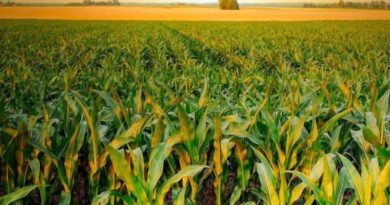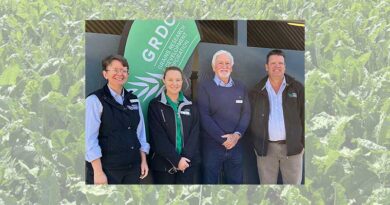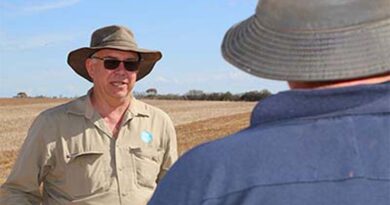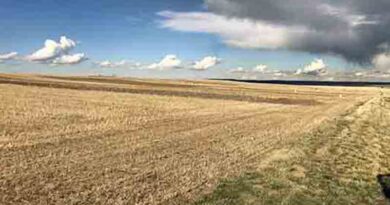Australia: Is native budworm targeting wheat crops?
09 March 2023, Australia: Western Australian growers are being encouraged to monitor wheat crops in areas with high native budworm activity, with reports of the pest – which is not commonly found in cereal crops – in very high numbers in the Geraldton port zone in recent seasons.
Research into native budworm activity from the Department of Primary Industries and Regional Development (DPIRD), with investment from the Grains Research and Development Corporation (GRDC), was presented today at the GRDC Grains Research Update in Northampton.
DPIRD research scientist Dr Dustin Severtson says that native budworm was a major established pest for WA’s pulse and canola crops, with large populations of native budworm migrating into agricultural regions in late winter and spring, and unpredictable migratory flights carrying them hundreds of kilometres.
“Growers are very familiar with native budworm as a major pest of pulses, lupins and canola. If you told me five years ago that I was going to be researching native budworm in wheat, I probably wouldn’t have believed you,” Dr Severtson says.
After reports from agronomists and growers in recent years of caterpillars feeding on wheat in spring, DPIRD and GRDC launched glasshouse and field research in 2021 to examine why native budworm was moving into non-traditional cereal crop hosts and understand potential yield losses.
“Project findings to date show that budworm moths are deterred from laying eggs on wheat plants, and larvae either starve to death or have reduced performance and smaller pupae when forced to feed on wheat,” he says.
“Budworm prefer to lay eggs on wild radish and volunteer lupins in wheat crops, so weed control is a critical part of preventing budworm moths laying eggs in crops and larvae transferring onto and feeding on wheat plants in spring.
Dr Severtson says that often where budworm caterpillar pressure in wheat was found, there were uncontrolled wild radish plants scattered through the crop.
“These plants are a host of budworm, and we do know that adult moths actively target egg laying on wild radish rather than wheat. This has now been confirmed through glasshouse trials,” he says.
“Similarly, if growers don’t get on top of volunteer lupins that are coming through, which are also hosts, these budworm moths are going to prefer laying eggs on the volunteer lupins, hatching and then potentially feeding on the wheat heads later in the season.
“In terms of the wheat itself, not only were they feeding into the glumes in the seed, where you’re going to get immediate yield loss and quality problems, but they were feeding on the flag leaf as well. However, damage was minor.”
Based on a field cage trial at Geraldton, economic losses are estimated at $1.71 per hectare, given 5 larvae per square metre (approx. 50 larvae per 10 sweeps), or $2.75 per hectare loss, given 10 larvae per square metre (approx. 100 larvae per 10 sweeps). This is based on a $360 per tonne wheat price and 2 tonnes per ha anticipated yield.
Dr Severtson encouraged growers to periodically monitor crops and walk their paddocks in spring.
“Keep your eye out, particularly for damage on the upper leaves and in the heads and make sure that you identify your caterpillars properly,” he says.
“We have other species, such as armyworms, which we start to see in spring, and there can potentially be more as we head into warmer spring temperatures.”
GRDC crop protection manager – west, Georgia Megirian, says that the project was initiated as a result of grower feedback through GRDC National Grower Network (NGN) forums, and aimed to give growers information on when and how to monitor caterpillar thresholds and quantify potential damage and risk scenarios.
“Alert times for budworm are generally late winter and spring when populations migrate very long distances into agricultural regions, causing crop damage at their most sensitive, growing time,” Ms Megirian says.
“This project aims to look at worst case scenarios and give growers an idea of acceptable thresholds for native budworm in wheat, so they know when to be concerned, and when they might need to implement management strategies.
“Another great resource is the PestFacts WA reporter app, where growers can send photos of their caterpillars to experts like Dr Severtson and receive advice on identification and management.”
GRDC has released a new video and podcast on native budworm in wheat, exploring this relatively new occurrence in the growing regions of WA.
Also Read: Indian government to launch Seed Traceability System for good quality seeds
(For Latest Agriculture News & Updates, follow Krishak Jagat on Google News)















